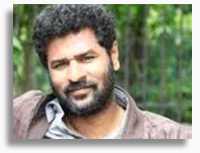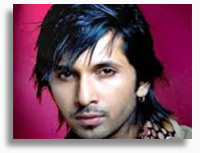CHOREOGRAPHY
Introduction to the Career
Dancing is an inherent part of Indian culture. There are many well-known classical and folk dances. These dance forms are typical to certain parts of the country and have taken on the hue and texture of that region. The two main divisions of dance are classical and folk forms. There are dance forms typical to certain parts of the country and these dance forms are based on ancient dance disciplines. Among the most popular classical styles of dance seen on stage are Bharatnatyam of Tamil Nadu, Odissi of Orissa, Kathakali of Kerala, Kuchipudi of Andhra Pradesh, Kathak of Lucknow and Jaipur and Manipuri of Manipur.
There are several other forms of dances that fall into the category of semi-classical, folk, drama and martial arts contributing to the panorama of dance in India.Dance is a form of passion that an individual carries with self. It has a power to entertain people, to express feeling and show talent. There are many people who like to dance in various form like traditional, Bharatnatayam, classical, hip hop, etc. It also depends on the person's likes and interest. Dance in film industry is called Choreography and is an important part of a film. In India, a film without song is incomplete, except some that depends on the story line. Songs with best choreography makes the whole song picturisation look best. There are two different types of choreography- Stage and camera choreography and both play an important role.

Thus in such cases the success in their career depends upon their expertise in the field. Training in dance should basically start as early as age six or less, much before the official professional training. Besides an in- born talent, is the basic requirement for a full time Professional. Some institutes at the time of admission even give preference to students having a talent. Careers in this field can be that of a performer, teacher and choreographer.
Personality Traits

For those who want to pursue a career in teaching or choreography they should have a liking for people of all ages, tact, endless patience, ability to explain verbally and to demonstrate the steps and movements of a dance, a fine sense of rhythm, some proficiency in music, good appearance, graceful movements, a friendly confident manner, energy, and enthusiasm.
The different types of dance choreography are:
- Stage choreography: This typically involves large-scale set ups with extravagant props and large groups of dancers. It is usually a part of fashion shows and competitions.
- Camera choreography: This form of choreography is employed in TV serials and reality shows.
- In India, there are several popular forms of dance. Dance schools also use a lot of western styles for choreography. But the four predominant forms are Indian classical, Indian folk dance, western classical, jazz and hip hop.
- Individuals need to possess innate talent which can be honed by training. It is best if one is trained in a classical dance form as it gives a strong foundation.
- Shiamak Davar Institute for Performing Arts, Mumbai
- Danceworx Performing Arts Academy
- Ashley Lobo, East of Kailash, New Delhi
- The Natya Institute of Kathak & Choreography, Bangalore
- Sangeet Natak Akademi, New Delhi
- Sandip Soparkar's Ballroom Studio, Mumbai
- Terence Lewis Dance Academy, Mumbai
- There are dozens of schools and institutes in countries like France, the US and the UK (Laban School, Alvin Ailey School, Graham School, Broadway Dance Centre in New York) which offer a wide variety of courses in contemporary, modern dance forms and ballet.
Some of the top colleges that offer a degree/ diploma in dance are:
Career prospects
- Those with a degree in dance may begin by working as a dancer (either freelance or by joining a company) or assist an established choreographer if they wish to work for movies and other big productions.
- Starting one's own dance class is another option. Beginners or trainees are paid anywhere between Rs 3,000 and Rs 15,000 for each show depending on experience, skill and budget. It takes a while to get noticed in the industry as it is still not considered to be a mainstream profession. So keep dancing, practising, and coming up with suggestions on how to improvise, experts say.
- "You have to be creative. You must constantly look at ways to improve your talent. You also need to be sure of your dance capabilities as there is no room in this industry for those who are insecure or doubt their talent," says a Mumbai-based choreographer.
- Health is equivalent to wealth in this field. A celebrity dance choreographer, says: "Young dancers may begin by getting a feel of all dance forms and then work on one particular form to develop their uniqueness."
- Putting together a show can be physically exhausting, especially if you are not used to the speed at which dance shows are choreographed and practised. It involves long hours of warm-ups, practise and synchronisation. The job could also involve a lot of travelling.
- The main challenge for a choreographer is in tapping the right talent - dancers who are well-trained, talented and committed. Getting sponsors for home productions is another hurdle.
- The only way to overcome these hurdles is to spread the word on dance education so that people are more appreciative of dance as a serious art form and a career. Choreography also teaches people skills.
Courses in Choreography

Institutes
There are many institutes in India that teaches choreography to aspirants. However, most of these institutes are run by established choreographer like Shiamak Davar, Farah Khan, Saroj Khan and many others. Institutes like Shiamak Davar Institutes of Performing Arts (Mumbai), Ashley Lobo (New Delhi), and Sangeet Natak Academy (New Delhi) Terence Lewis Dance Academy (Mumbai), The Natya Institute of Kathak and Choreography (Bangalore) and many others.
Choreography |
Remuneration in Choreography:
The remuneration for a choreographer depends on the work and experience in the work. A trainer can get around Rs 3,000-10,000/- per show. As the experience increases the remuneration can go upto lacs per film.
